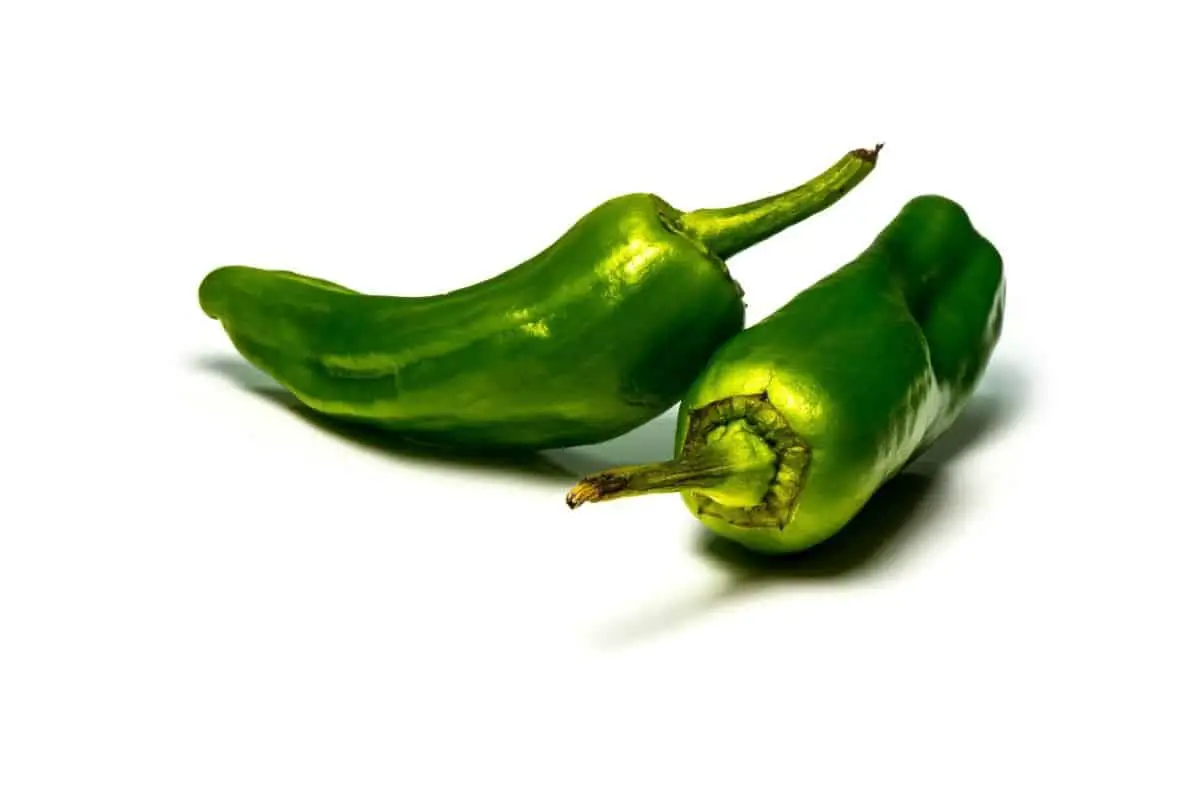This post contains affiliate links.
It’s Taco Tuesday at home and you’re getting dinner ready. You’ve got the tortilla chips, the taco filling, and a bowl of fresh salsa with jalapenos. You’ve also got a dog who’s giving you big puppy eyes while you’re eating, but is it really safe to feed your dog jalapenos?
Dogs should not eat jalapenos. Although they’re not toxic to dogs, jalapenos are spicy and can prove to be very hard on your dog’s stomach and digestion. Additionally, like most spicy foods, jalapenos will inflame your dog’s stomach, bowels, and intestines, and can cause vomiting or diarrhea.
Read on to learn about the different reasons why jalapenos are not advisable for dogs, how they affect their bodies and digestive systems, what symptoms to look out for should your dog end up eating jalapenos and get sick, and subsequent treatment and care.
Table of Contents
Jalapenos: The Good, The Bad, and The Spicy
Jalapenos, by themselves, are not toxic to dogs. Foods that are toxic to dogs, like chocolate, avocado, or garlic, contain compounds that affect their health and digestion. Just because jalapenos aren’t toxic to dogs doesn’t mean they’re an ideal snack.
Jalapenos can have a negative impact on your dog’s digestion and cause him a great amount of discomfort following consumption. They also lack nutritional benefits relevant to canines, so incorporating jalapenos into dogs’ diets isn’t necessary for their overall health.
Let’s take a look at some of the main reasons jalapenos are bad for your dog.
3 Reasons Why Jalapenos Are Bad for Your Dog
Here are the 3 primary reasons why jalapenos are bad for your dog:
- Dogs may not perceive the spice and consume more.
- Jalapenos can cause digestive health problems.
- Jalapenos can trigger allergies.
Dogs May Not Perceive the Spice and Consume More
Your dog has about 1,700 taste buds on his tongue. This means that he can taste his food, although not the same way that humans do.
He will not respond to taste and flavors the same way you, a human will. But dogs have been known to differentiate, register, and acknowledge a specific range of foods. Your dog probably has a favorite food, right? That’s his way of saying that he can ‘taste’ that particular food and that he likes it.
Spiciness—or spicy foods—is a perceived taste, much like sweetness and sourness. This is why different people have different thresholds for spice. The same applies to dogs. However, while they can taste the spice, they do not perceive spice levels the same way.
As a human, you eat one jalapeno popper, and you’ll be able to tell if it is too spicy for you. If it is, you will stop eating it. Your dog, however, will continue to chow down his food as the spice will not affect his taste buds, only his digestive system. This means your dog may unknowingly consume high quantities of jalapenos in one sitting, without realizing the effects they can have on his stomach later.
This is why you need to be extra careful about what goes into your dog’s food and even more cautious of what he puts in his mouth.
Jalapenos Can Cause Digestive Health Problems
Remember how we read about a dog’s taste buds not registering spice the same way? Well, your dog’s stomach, on the other hand, is a pro at recognizing something too spicy for it. It will make its protests abundantly clear. How?
Cue vomiting and diarrhea.
When your dog eats hot jalapeno peppers, the walls and lining of his stomach and intestines get inflamed. This will make his stomach burn and ache, and he will feel a lot of discomfort.
Some of the common side effects your dog may encounter when eating jalapenos include:
- Acute Gastroenteritis. Acute gastroenteritis is a condition that is caused by inflammation or infection of the gastrointestinal tract. It can be brought on by intolerance or allergic reaction he might have towards the food he ate—jalapenos, in this case.
- Colitis. Inflammation in the membrane lining of the colon can be caused by any new food that he ate that disagrees with his digestive system.
- Pancreatitis. The most common digestive issue when your dog eats something bad for him, like jalapenos, is pancreatitis. This causes an inflammation of his pancreas. Any food that is too rich in fat or sodium, spicy, or just too hot will cause the pancreas to become inflamed.
3. Jalapenos Can Trigger Allergies
Jalapenos, while not toxic, might react with your dog’s immune system and trigger an allergic reaction. This can manifest through several possible symptoms:
- Coughing
- Hives or rashes
- Paw Biting
- Wheezing
- Itchy Skin
- Obsessive licking
You can also check your dog’s gums and tongue to see if they are swollen or inflamed. This is a natural reaction to eating something as spicy as jalapenos. The jalapeno seeds might also cause tiny red bumps along the surface of his tongue.
An allergic reaction to jalapenos is often caused by a particular substance called capsaicin that will irritate your dog’s intestines. This means his digestive system will not effectively break down the proteins in the food particles.
Over time, this will become more aggressive and trigger allergic symptoms, like those you just read about.
Possible Symptoms of Food Intolerance
Your dog’s body and his digestive system will do their best to get rid of anything that isn’t agreeable to them. But, unfortunately, the process is not pleasant for your dog, who will display a multitude of symptoms ranging from bad breath, to diarrhea, to flatulence, to creative combinations of different symptoms.
Diarrhea
The most common symptom of food-related intolerance is diarrhea. We’ve seen how, when he ingests jalapenos, his system reacts negatively to the compounds. So his body will eject the obtrusive particles through loose, unformed, and copious amounts of stools.
Remember that diarrhea is not an illness but rather his body’s way of ejecting food particles—the accursed jalapenos—that might cause him to become sick. So while acute diarrhea will not seriously injure or harm your dog, you should always keep a vigilant eye on him and take him to the vet if his symptoms persist.
Vomiting
On the other end of the spectrum, or other end of his body as the case is, your dog might also experience vomiting, as his body’s natural way of getting rid of the waste. Diarrhea is often accompanied by vomiting, but not always. Depending on how many jalapenos he ate, and in what form, your dog might be sick on both ends for a while.
Flatulence
Too much spicy food can and will cause bad breath in dogs. But worse, it will cause flatulence. It’s the same with humans, but the problem is your dog’s not going to do anything to be discreet about it. If there were ever a reason not to feed your dog jalapenos, this would be it.
Treatment and Care
If your dog’s side effects to eating jalapenos haven’t subsided and are continuing to persist, you’ll have to ensure you’re ready to provide appropriate treatment and care. Adequate treatment and care includes rehydrating your dog and adjusting his diet to neutralize his digestive system.
Treating Gastrointestinal Issues
Here are the steps to take to treat your dog’s gastrointestinal issues if he recently consumed jalapenos:
- Ensure he drinks plenty of fluids. A dog with diarrhea will need plenty of fluids to keep him hydrated and also to keep his energy levels up. Fresh and regularly replenished water will also help flush out the irritants in his system.
- Give him bland foods. When your dog is dealing with diarrhea, the most effective treatment would be to switch over to bland food like rice, boiled chicken, or a soupy congee-like blend of rice and a bland vegetable like pumpkin— mashed and pureed.
- Switch to a liquid diet. If your dog cannot keep anything down, it is often advisable to switch over to a liquid diet. For example, chicken broth is a great way to keep him nourished and to ensure he gets enough liquids.
Treating Flatulence
With regard to treating flatulence, your vet might be able to prescribe your dog an antacid or medication like simethicone to help him feel less bloated. Give him plenty of water to flush the jalapenos out. Don’t aggravate his already bloated system with dairy or other high-fat foods.
Other than that, just sit tight and pray for a miracle, invest in some industrial-grade room freshener, and hope for it to pass, no pun intended.
Treating Allergic Reactions
If you suspect your dog is having an allergic reaction to jalapenos, take the following steps:
- Try the elimination Diet. Jalapenos are not a common element you’d find in dog foods, so it should be relatively easy to find out precisely what is causing the allergic reaction and how your dog ate the jalapenos in the first place.
- Take your dog to the vet. If you’re not sure what to do, then your first choice should be to take him to the vet. If his symptoms are severe, he may need a round of antibiotics to help him get back on his feet. The doctor might also be able to help him feel more comfortable and help him with an antacid for flatulence and bloating, or some medication to flush out the toxins from his body a lot quicker.
Can You Feed Him Deseeded or Pickled Jalapenos?
You can’t feed your dog deseeded or pickled jalapenos. They are still bad for your dog, and it is not advisable to feed him any, as the traces of spice can still upset his stomach.
A safer alternative to jalapenos are bell peppers. They’re similar in appearance and texture, but without the spice. While bell peppers are considered safe to feed your dog, remember to test out your dog’s reactions first.
Feed him a few bits and wait to see how he reacts to it. If he appears to be fine and you don’t see any acute or immediate symptoms, feel free to include them in his diet, albeit without the seeds.
Conclusion
There are so many ways to spice up your dog’s diet, but jalapenos are not one of them because they can, ultimately, lead to digestive problems. If your pooch accidentally eats one, the chances are he’ll need to drink water to wash it out. It’s only when he eats a significant amount that you need to be concerned about possible symptoms and how to treat them.
Related Articles
- My Dog Ate a Cactus: Here’s What To Do About It
- Can a Dog Eat Teriyaki? Is It Safe?
- Can Dogs Eat Animal Crackers? (Is It Safe)
- Can Dogs Eat Artichokes? (We Ask the Experts)
- Can Dogs Eat Asparagus? (We Asked the Experts)
- Is Papaya Good for Dogs? (We Find Out)
Sources
- Fetch by Web MD: Slideshow: Foods Your Dog Should Never Eat
- Hill’s Pet: Gastrointestinal & Digestive Disorders in Dogs: Types & Causes
- Wag Walking: Jalapeno Allergies in Dogs
- VCA Hospitals: Diarrhea in Dogs
- American Kennel CLub: How to Stop Dog Farts
- PETSOID: Can Dogs Eat Jalapenos & Is it Safe?
- Pet MD: Can Dogs Get Food Poisoning?
Mrdogfood.com is a participant in the Amazon Services LLC Associates Program, an affiliate advertising program designed to provide a means for sites to earn advertising fees by advertising and linking to Amazon.com. We also participate in other affiliate programs which compensate us for referring traffic.





